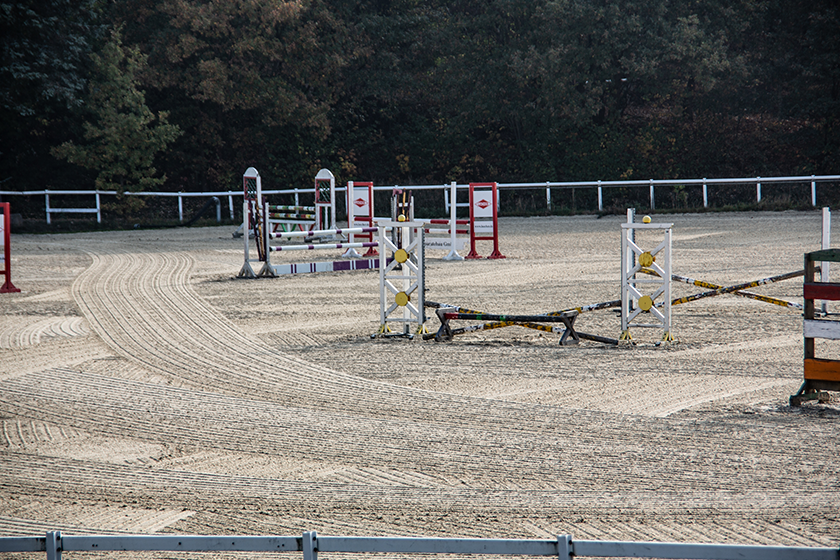

Breaking Down The Horse Arena Footing Cost
When planning to build or refurbish a horse arena, understanding the costs associated with the footing is essential. The arena footing cost can vary significantly depending on the materials you choose, the size of your arena, and other factors such as installation and maintenance needs.
Whether you’re starting from scratch or upgrading an existing arena, understanding these costs helps ensure you make an informed decision that suits your budget. In this guide, we’ll break down the costs associated with popular footing materials and explain how different factors impact your overall expenses.
What Influences Horse Arena Footing Cost?
The cost of horse arena footing depends on several key factors, including the type of material, installation requirements, and maintenance. Let’s take a closer look at the factors to consider.
Type of Footing Material
The material you select for your footing plays an important role in the overall cost. Common options include sand, wood chips, rubber mulch, and synthetic blends, each offering different price points and benefits.
Sand
Sand is one of the most common materials used for horse arenas due to its affordability and availability. The cost of sand can vary, typically ranging from $15 to $40 per cubic yard, depending on the type and location. While sand is inexpensive, it may require regular maintenance and additions to keep it in good condition.
Rubber
Rubber is often added to sand to improve the surface’s shock absorption qualities. Rubber footing can range from $100 to $300 per ton. Although it’s more expensive than sand, rubber can reduce the frequency of injuries and is durable under various weather conditions.
Wood Chips or Fiber Blends
Combining wood chips with sand creates a more cushioned surface, often used for specific disciplines like dressage. Wood chip blends usually cost between $3,000 and $8,000.
Synthetic Footings
Synthetic materials, such as fibers and textiles mixed with sand, offer advanced performance features. These materials can cost anywhere from $0.50 to $2.50 per square foot. While the initial investment is higher, synthetic footings typically require less maintenance and have a longer lifespan.
Arena Size
The size of your arena significantly affects the overall cost, as larger arenas require more material and labor for installation. For example, an arena designed for competitive use or multi-discipline training will likely cost more than a smaller, personal-use arena. When planning your budget, measure the arena space accurately to estimate the amount of footing material required.
Installation Costs
In addition to the cost of footing materials, installation expenses also need to be considered. Professional installation can add anywhere from $2,000 to $8,000, depending on the complexity of the project, location, and the type of footing being used.
Proper installation is essential to ensure even distribution and stability, especially with footing materials like rubber mulch or synthetic blends.
- DIY Installation: Some owners opt to install footing themselves to save on costs. While this can reduce expenses, DIY installation can be challenging and may lead to issues like uneven surfaces if not done correctly.
- Professional Installation: Hiring a professional ensures that the footing is installed correctly, improving longevity and performance. It’s particularly recommended for more complex materials, such as synthetic footing blends.
Base Preparation
A strong, well-constructed base is essential for any type of arena footing, as it supports the top layer and prevents issues like compaction and uneven surfaces. Base preparation costs vary depending on the condition of the site, the materials used, and labor expenses. A properly installed base can add $5,000 to $15,000 to your total project cost.
Ongoing Maintenance Costs for Horse Arena Footing
In addition to the initial installation costs, regular maintenance is essential to keep the footing in optimal condition. Investing in quality horse arena maintenance equipment will help you maintain footing consistency, reduce dust, and extend the life of your arena surface.
Grooming and Leveling
Regular dragging and grooming keep the footing level and prevent compaction, particularly in high-traffic areas. Tools like arena drags and groomers are essential for this task, with prices ranging from $500 to $3,000 depending on the model and size.
Dust Control and Watering
Dust control is particularly important for sand-based footings, which tend to dry out and produce dust. Installing a watering system or adding dust control products to the footing material can help reduce maintenance costs and create a healthier environment for horses and riders.
Periodic Replenishment of Footing Material
Most footing materials degrade over time, especially with regular use. Sand and wood chips need more frequent replenishment than synthetic materials, so factor in this ongoing cost. On average, replenishing footing can cost anywhere from $500 to $2,000 per year, depending on usage and the type of material.
Where to Find Horse Arena Footing and Maintenance Equipment?
When looking for horse arena footing for sale, it’s important to compare different products and suppliers. Prices can vary based on quality, material type, and supplier reputation. Always request samples and check references to ensure you are getting the best value for your investment.
Once you’ve invested in quality footing, maintaining it is essential to preserve its performance and longevity. At Greystone USA, we specialize in providing top-quality horse arena maintenance equipment. Besides arena drags and groomers, we also have pasture vacuums that simplify waste removal and travel fences for flexible arena setup.
Invest in Footing that Supports Performance and Durability
Choosing the right footing is a key part of creating a safe and effective horse arena. With the right maintenance practices and tools, you can extend the life of your arena surface, ensuring it stays in top condition for years to come.
For reliable, high-quality maintenance tools, visit Greystone USA. Our equipment is designed to make arena upkeep straightforward and effective, helping you provide the best environment for your horses and riders.